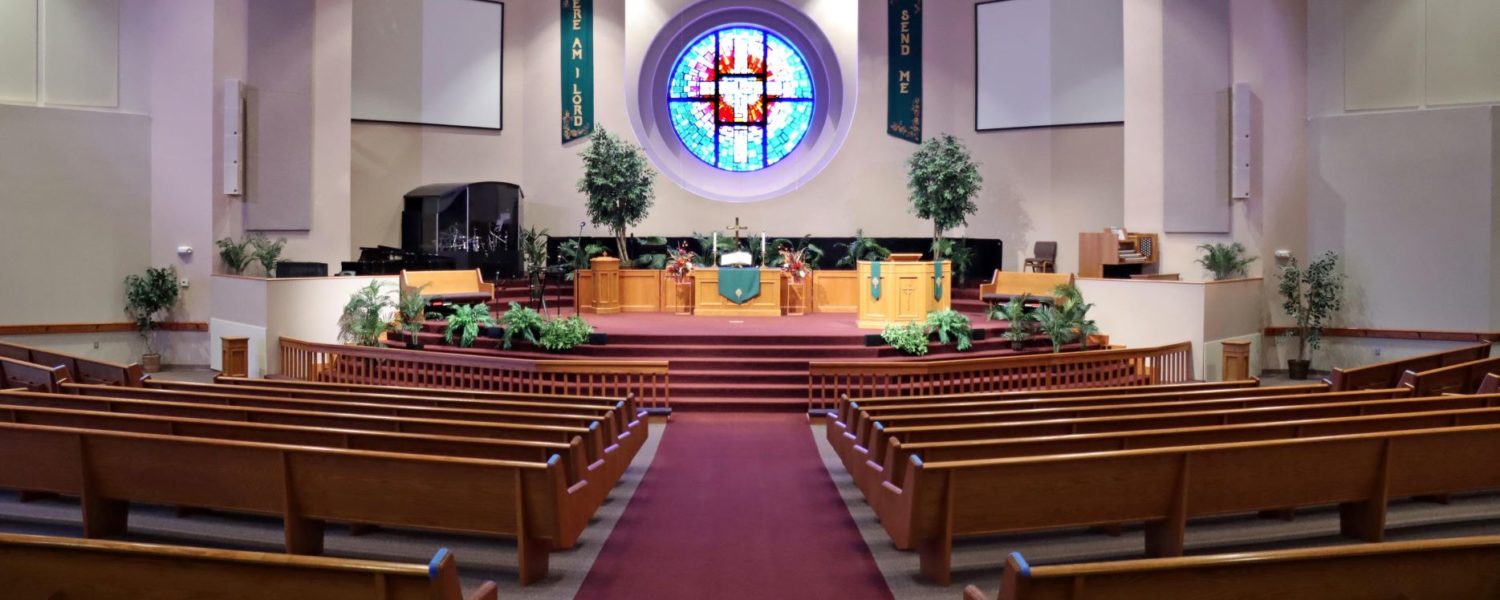By Dudley McLaughlin
The house of worship environment has long been a bastion of innovation in terms of AV capabilities. For example, while some would be quick to point out the many challenges of a worship environment for pro audio, others see these spaces as a proving ground for new technologies that mitigate challenging reflective surfaces and architectural flourishes.
Here’s a more recent example. When the global pandemic required us to begin social distancing and remain sequestered to our homes as much as possible, worship teams around the world found ways to quickly and effectively live stream services to their congregations.
These two capabilities – impressive on-site audio coupled with robust video offerings – have accounted for the majority of AV improvement work being done over the past few years. The pandemic simply accelerated the adoption of the video side in 2020.
That said, what innovations will we see in the world of worship as we increasingly return to in-person services? The use of AV has long been considered a tool to welcome the congregation into worship – and that atmosphere must remain even as we look at hybrid setups.
Let’s take a moment to look at a few use cases that are becoming more and more common as houses of worship enter the next step of a return to normalcy – and see how AV is being used to assist in this process.
The Classic Case of Intelligibility
As a foremost requirement on the audio side of the AV equation is intelligibility of the spoken word. Solving for intelligibility requires a few basic considerations. The sound system must offer an adequate amount of bandwidth, proper signal-to-noise ratio, and the correct direct-to-reverberant ratio. Further, it must be able to mitigate or avoid any reflective surfaces that would interfere with the audio.
Achieving this can be done effectively in two primary ways: designing a point-source system that implements acoustic room treatments or utilizing digitally steerable loudspeakers.
The first option quickly becomes costly as room treatment requirements rise in price. Further, the addition of multiple speakers is often an unpalatable option for worship spaces seeking to ensure the sound system blends into the aesthetics of the space.
Thus, we turn to digitally steerable solutions. These offerings are typically quite slim in design, require fewer speaker installations throughout a space (often, just two or three speaker arrays are necessary), and avoid room treatments by offering the capability to digitally position sound precisely where you want it: on the congregation.
A Hybrid Scenario
As worship spaces seek a return to in-person service, one offering that is unlikely to be left behind in the past year is streaming offerings. Simply put, the video offerings from worship teams are a valuable resource with minimal upkeep required.
That said, one challenge worship spaces are discovering when they welcome the congregation back on-site is that the in-person audio system causes serious issues with the video stream audio offerings.
The reason for this is many audio systems sound “good enough” while used in person. However, when both direct and reverberant sound is delivered through microphones, the video feed quickly sounds unintelligible. Suddenly “good enough” doesn’t cut it.
As hinted at earlier, digitally steerable solutions fix this challenge. By removing reflective sound from the equation, on-site microphones are no longer picking up multiple audio sources. The result is both a repaired feed on stream and an improved experience on-site. This offers a true hybrid solution for the long-term use of streaming offerings.
Be Flexible, Be Agile
For those with ample space, the ability to set up “overflow” rooms where additional worshipers can be located will also be worthy of consideration. Of course, this is enabled by adding the correct mix of audio and video offerings already mentioned.
By adding a high-quality display and highly intelligible loudspeakers in auxiliary rooms, worship spaces can quickly – and safely – add more individuals to the on-site side of the hybrid equation.
This is just one example of what the correct upgrade to worship-centric AV can enable in the near-term. There are multiple other near-term and long-term uses that open up once the correct system is integrated. Some examples include new offerings for Sunday school curricula, outdoor participation in services, and improved life safety PA offerings.
The truth is that starting with the correct audio offerings serves not only as an improvement to the worship environment, but also enables creativity throughout a space and on a video stream.
To begin this process, seek out system designers that are working with reputable manufacturers in the digitally steerable loudspeaker space. These systems can be expertly crafted using advanced sound modeling software and can even be custom fabricated or painted to ensure they blend in perfectly with your worship environment.
By taking the first step to sounding better – both on-site and remotely – you open a flexible and agile worship environment that will prepare you for whatever is ahead. And that confidence is a comforting element to have as we work together to return to our places of worship.
Dudley McLaughlin is national sales manager at Renkus-Heinz, which creates loudspeakers that give you a technical advantage – the ability to put sound where you want it, www.renkus-heinz.com.












